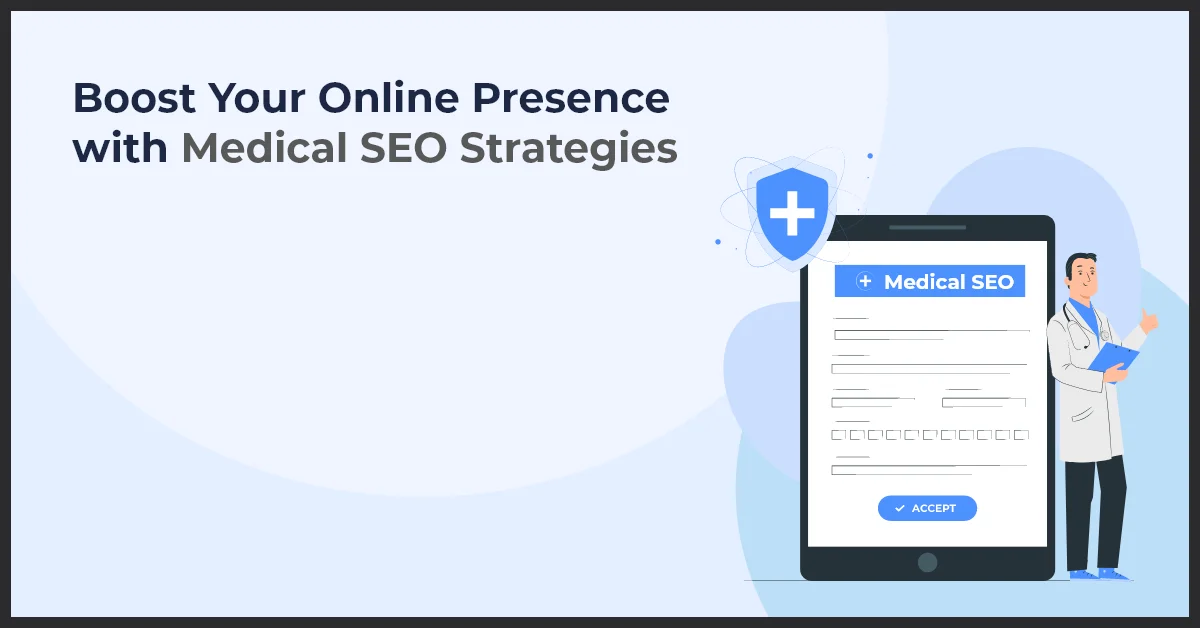Holiday Marketing Ideas to Drive E-Commerce Success This Festive Season

Published on: September 24, 2021
Updated on: March 28, 2025
1931 Views
- Digital Marketing
15 min read
Understanding the Holiday Season and its Impact on Ecommerce Businesses
As an ecommerce business owner, it's crucial to understand the impact of the holiday season on consumer behavior and purchasing patterns. This knowledge will help you create effective holiday marketing campaigns that capitalize on increased customer demand.
As the holiday season approaches, most people think it’s time to relax, but not you eCommerce marketers! For you, it's time to pull your socks up and get ready for the frenziest three months of the year!
Holidays account for the greatest share of profits in the year, especially for eCommerce brands who can leverage these as the most important time to capitalize on. Other than preparing inventories and stocking up on the supply side, it’s imperative that you increase demand, and of course, the best way to do that is to engage thematically with consumers through holiday marketing.
Adapting your marketing campaigns to the holiday season is key. Here are a few tips on how you can alter your campaigns around the coming holiday season.
Generally speaking, for any holiday, you can make a few small changes to your holiday marketing campaign.
- Change your website homepage theme to match the decor for that specific holiday. Decorating your online store is a proxy to decorating an offline store and puts a consumer in a festive mood as soon as they enter the store, physical or virtual.
- Change your mobile app icon but not entirely. Stay on brand, and don’t make it unrecognizable. This is not a rebranding exercise but simply a moment of embellishment. For reference, you can see the tiny Santa hat the VLC traffic cone dons as Christmas approaches.
- Use themed posts for social media. You could adapt your color scheme, your font, or just add some graphic elements. Let your consumers know it’s almost sale time!
- Offer discounts for early-bird shoppers. These discount codes can emerge through contests on your social media, email campaigns to subscribers, or as a general pop-up banner to anyone who visits your store.
- Club your products together into gift bundles for consumer convenience and increased collective sales. This makes holiday shopping less stressful and better organized for consumers and more profitable for you.
Now, let’s be more specific to each holiday.
How the Holiday Season Affects Consumer Behavior and Purchasing Patterns
The holiday season brings about a significant shift in consumer behavior and purchasing patterns. During this time, people are actively searching for the perfect gifts for their loved ones, and they are more likely to make impulse purchases. This creates a unique opportunity for ecommerce businesses to attract and convert customers.
Consumers tend to have a sense of urgency during the holiday season, as they want to ensure their purchases are made in time for holiday celebrations. This urgency often leads to increased online shopping, as it provides convenience and eliminates the need to visit crowded physical stores.
Additionally, consumers are more inclined to spend money during the holiday season, as they are often influenced by the spirit of giving and want to create memorable experiences for their friends and family. This increased spending presents ecommerce businesses with the opportunity to boost their sales and revenue.
Importance of Holiday Marketing Campaigns in Capitalizing on Increased Customer Demand
With the significant increase in customer demand during the holiday season, it is crucial for ecommerce businesses to implement targeted holiday marketing campaigns. These campaigns allow businesses to capture the attention of potential customers and drive them towards making a purchase.
By creating holiday-themed promotions, discounts, and offers, ecommerce businesses can entice customers to choose their products or services over their competitors. A well-crafted holiday marketing campaign can not only increase sales but also enhance brand awareness and customer loyalty.
Furthermore, holiday marketing campaigns provide an opportunity for businesses to showcase their products or services as ideal gifts for loved ones. By highlighting the unique features, value, and benefits of their offerings, ecommerce businesses can position themselves as the go-to destination for holiday shopping.
Overall, understanding the impact of the holiday season on consumer behavior and utilizing strategic holiday marketing campaigns are essential for ecommerce businesses to leverage increased customer demand and maximize their holiday sales.
Identifying and Targeting the Right Audience for Holiday Marketing
During the holiday season, it is crucial for ecommerce businesses to focus on customer targeting and segmentation to maximize their marketing efforts and increase sales. By identifying and targeting the right audience, businesses can effectively tailor their marketing messages and offers, capturing the attention of different customer segments. Here are some techniques to help you segment your customers based on demographics, interests, and purchase history:
- Demographics: Analyze data such as age, gender, location, and income to understand your target audience better. This will help you create personalized campaigns that resonate with specific demographics.
- Interests: Use customer behavior data and browsing history to determine their interests and preferences. By understanding what products or categories they are interested in, you can create targeted promotions that appeal to their specific interests.
- Purchase History: Analyze past purchases and customer behavior to segment your audience based on their buying habits. This will allow you to offer personalized recommendations and incentives that align with their purchase history.
To effectively target your audience during the holiday season, consider the following techniques:
- Personalized Marketing Messages: Craft marketing messages that speak directly to each customer segment. Use language, imagery, and offers that are tailored to their interests and needs, increasing the chances of engagement and conversion.
- Tailored Offers: Create special promotions and discounts based on customer segments. For example, offering exclusive deals to loyal customers or offering free shipping to high-value customers can encourage them to make a purchase during the holiday season.
By identifying and targeting the right audience, you can enhance your holiday marketing efforts and drive more sales for your ecommerce business.
Leveraging Email Marketing for Holiday Promotions
Email marketing plays a crucial role in holiday marketing for ecommerce businesses. With the right strategies, you can maximize the effectiveness of your email campaigns and drive significant results during the holiday season.
Importance of Email Campaigns in Holiday Marketing for Ecommerce Businesses
Email campaigns are a cost-effective way to reach your target audience and promote your holiday offers. By leveraging the power of email marketing, you can stay top-of-mind with your customers and increase brand visibility during this busy time of year.
One of the key benefits of email marketing for holiday promotions is its ability to deliver personalized and tailored content to your subscribers. By segmenting your email list based on customer preferences, purchase history, or demographic data, you can provide relevant offers that resonate with each individual.
In addition, email campaigns allow you to communicate directly with your customers, build relationships, and foster loyalty. By sending relevant and engaging content, you can create a sense of exclusivity, generating excitement and anticipation for your holiday promotions.
Strategies for Creating Engaging Holiday-Themed Newsletters and Promoting Exclusive Offers
When crafting holiday-themed newsletters, it is essential to capture the festive spirit while staying true to your brand. Consider using eye-catching holiday visuals, incorporating holiday-related content, and creating a sense of urgency with limited-time offers or discounts.
To make your newsletters more engaging, include compelling headlines, concise copy, and clear call-to-action buttons that drive recipients to your website or specific landing pages. Experiment with different email layouts and designs to find what resonates best with your audience.
Offering exclusive deals or promotions through emails can incentivize customers to make a purchase. Consider providing early access to holiday sales, unique discounts, or free shipping for subscribers to make them feel appreciated and special.
Utilizing Automated Email Sequences to Drive Customer Engagement and Conversions
Automation is an invaluable tool for managing email marketing campaigns during the busy holiday season. By setting up automated email sequences, you can nurture leads, drive customer engagement, and increase conversions without manual effort.
Start by creating a welcome email sequence for new subscribers, introducing them to your brand and highlighting any holiday promotions. Throughout the holiday season, send targeted emails based on customer behavior or preferences, such as abandoned cart reminders, personalized product recommendations, or post-purchase follow-ups.
Don't forget to incorporate email analytics to track the performance of your campaigns. By analyzing open rates, click-through rates, and conversion metrics, you can optimize your email sequences to drive better results.
Here are a few holiday marketing ideas curated for your eCommerce business.
Consider this our holiday present to you! ;)
For Thanksgiving
Thanksgiving brings with it the two great sale events—Black Friday for offline sales and Cyber Monday for online sales.
Other than advertising the shockingly low prices and great deals offered on Cyber Monday, an ecommerce company can play to the emotional and festive side of Thanksgiving in their marketing campaigns.
- For a B2C company that wants to engage in CSR as well, an emotive marketing campaign can play out simply by using packaging. “Thank you” packaging could include the names or roles of everyone involved from the conception to the delivery of your product, making consumers realize the value of your product and its sustainability quotient.
- For Cyber Monday, through a “Thank you Gifting Guide”, a B2C company could promote values of gratitude and kindness to thank those who are not often acknowledged such as mothers, teachers, cooks, and friends. Given that Cyber Monday makes sale prices extremely low, these gifts wouldn’t pinch as much. The guide would simplify and streamline the noisy and chaotic experience of Cyber Monday shopping.
- As a useful, cool, and low-cost freebie, a B2C company could send thanksgiving dinner conversation starters (to avoid family fights and awkward silences at dinner) and a recipe book pdf or physical copy (for those who cannot be with their families at thanksgiving) with every order, therefore also making this an emotional campaign.
- As a B2B company, you can optimize your holiday marketing campaigns with an emotive campaign that will not just make you more visible to your consumers but also to your consumers’ consumers. The campaign suggests that the real heroes are always hidden as B2B products often go unnoticed by B2C consumers.
A proxy can be used with a chef being complimented and thanked but a sous chef, who cuts the vegetables and plates the dish preparing a large feast for thanksgiving, is not being thanked or even noticed. Nor is the dishwasher or the knifemaker noticed, even though they play key roles in the preparation of the Thanksgiving feast.
This is a two-pronged marketing attack that encourages consumers to ask questions and pay attention to the elementary B2B products that make the B2C products they directly consume. It is a good B2B holiday marketing strategy as consumer-accessible B2B holiday marketing makes consumers put pressure on the B2C companies to use their favorite B2B products.
For Halloween
Halloween comes with its spooky symbolism that is visually catchy and easy to incorporate into holiday marketing campaigns—jack o lanterns, ghosts, spiders, mummies, a drippy bloody font, and other scary imagery are celebrated elements of Halloween marketing.
- One way for any ecommerce company to increase sales around Halloween is to make your ads a little spooky—avoid jump scares; just make sure your audiences catch a spooky vibe. The good news is that horror storytelling has an arc that builds interest and peaks only in the end, making Halloween ads more interesting and almost unskippable.
- Consumer interaction is paramount for B2C companies. Thus, for consumer engagement on social media, given how diverse and complicated Halloween costumes featuring puns, jokes, and references have become, you can organize a contest for your followers to “Guess the costume” to get a discount code to use on their ecommerce platform.
Considering the importance of consumer reviews and testimonials, you can also ask your consumers to give product reviews dressed in their Halloween costumes to get discount codes in return.
- As a B2B company with complex products, you can explain your product features with spooky animation using whiteboard animation where the pen/cursor is a spider and all the content looks like it's either woven by or caught in a spiderweb.
- Both B2B and B2C ecommerce companies can use the theme of a Haunted house, making it optional with the dark mode on their website and mobile apps.
They can hide easter eggs in the design using hover and click animated pop-ups like a ghost coming out of a chimney, a window cracking and creaking, a spider crawling across the products, or a vanishing banner.
For Christmas
Christmas is the most magical time of the year. It is not just for joy and festivities but also for magically doubling sales. The spell is cast by using Christmas symbolism in your marketing and capitalizing on the spirit of the holiday which is already inherently capitalist because people must buy gifts for each other.
- Santa Clause is the King of Christmas and the dominating symbol when it comes to Christmas marketing. Ecommerce companies can not only use the visual of Santa but also the concept for their marketing.
Since Santa and eCommerce companies have a delivery service in common, an eCommerce company can make its delivery agents dress up as Santa Clause for Christmas deliveries, making consumer dreams come true.
- A CSR campaign by eCommerce companies can be based on the afforestation of Christmas trees instead of their deforestation. Your company plants trees and then makes Christmas tree-shaped products or product bundles to replace them, either with your products or with recycled plastic, on which ornaments can be hung. Also, include attachable strings with all your ornament-sized products so that consumers are able to use everything as a tree ornament.
- Both B2B and B2C companies can use a “12 days of Christmas discount calendar”. B2C companies can do it on a subscription basis so that a consumer wins something special in concessions each day and shops more. On all 12 days, B2B companies can introduce new products to their consumers and educate them of their features and benefits, while also providing discounts and freebies.
- B2B companies can use animated videos and list product features to the tune of Christmas carols for catchy advertising.
- Apart from making a gifting guide for thoughtful gifting, ecommerce companies can themselves engage in thoughtful gifting. Under the tree is a thoughtful gifting CSR campaign for trees that wouldn’t otherwise have gifts under them on Christmas morning. In the spirit of Christmas, companies can try to use profits to donate some gifts to charities or to homeless people.
As you prepared to double your sales and profits this year? Remember to capture the spirit of the holiday season and make your marketing emotive and generous to those the holiday season isn’t as kind. Happy almost-Holidays!
Analytics and Measurement for Holiday Marketing Success
When it comes to holiday marketing in ecommerce, measuring the effectiveness and return on investment (ROI) of your campaigns is vital. Without proper analytics and measurement, it becomes difficult to understand what strategies are working and how to optimize them for maximum impact.
One key aspect of measuring holiday marketing success is tracking key performance indicators (KPIs) specific to your campaigns. These KPIs can include metrics such as conversion rate, average order value, click-through rate, and customer acquisition cost. By consistently monitoring these metrics, you can gain valuable insights into the performance of your campaigns and make data-driven decisions to refine your strategies.
Analytics tools play a crucial role in measuring the success of holiday marketing in ecommerce. Platforms like Google Analytics provide a wealth of data and insights that can help you understand customer behavior, identify trends, and optimize your marketing efforts accordingly. By utilizing these tools, you can track the performance of your website, email campaigns, social media ads, and more.
Conclusion
As the holiday season approaches, it is vital for ecommerce businesses to have a comprehensive holiday marketing strategy in place. Throughout this content plan, we have explored various key points that are essential for a successful holiday marketing campaign.
We first introduced the concept of holiday marketing in ecommerce and highlighted its significance in boosting sales and driving customer engagement. Understanding the holiday season and its impact on ecommerce businesses was discussed, emphasizing the need to be prepared for the surge in demand during this time.
Identifying and targeting the right audience is crucial for holiday marketing success. Crafting seasonal campaigns that resonate with customers and leverage their emotions can significantly increase conversion rates. We also explored the power of email marketing and social media advertising in reaching and engaging holiday shoppers.
Optimizing ecommerce websites, creating gift guides and product recommendations, as well as implementing retargeting and remarketing strategies were all discussed as effective tactics for holiday marketing success. Enhancing mobile commerce and leveraging influencer partnerships were also highlighted as valuable strategies during the holiday season.
Finally, we emphasized the importance of analytics and measurement in evaluating the effectiveness of holiday marketing campaigns and making data-driven decisions for future improvements.
In conclusion, a comprehensive holiday marketing strategy is vital for ecommerce success during the holiday season. By implementing the strategies discussed in this content plan, businesses can maximize their sales, engage with their target audience, and create memorable holiday experiences for their customers.



